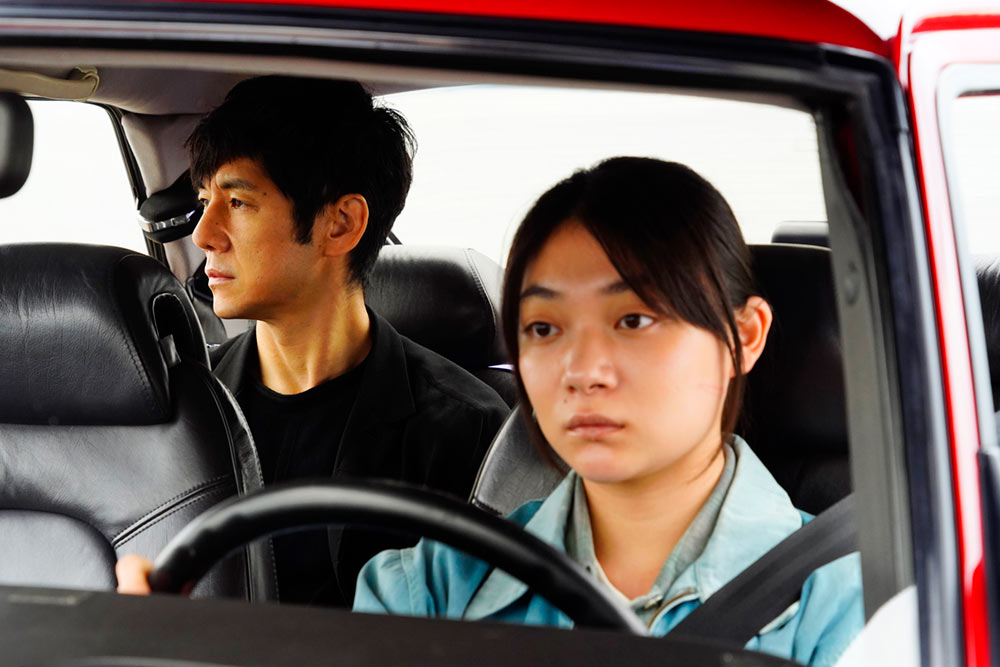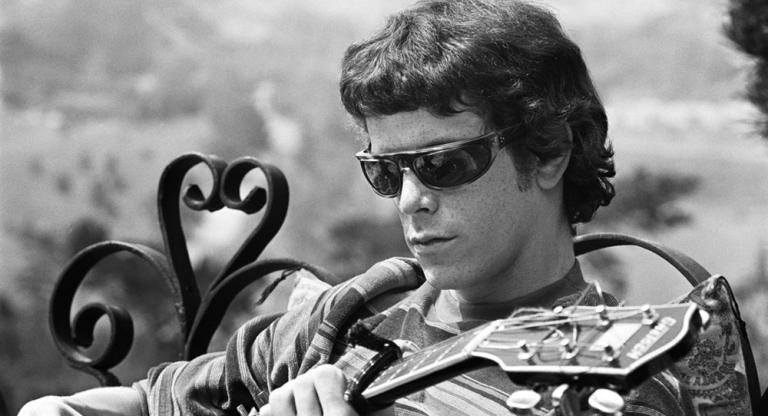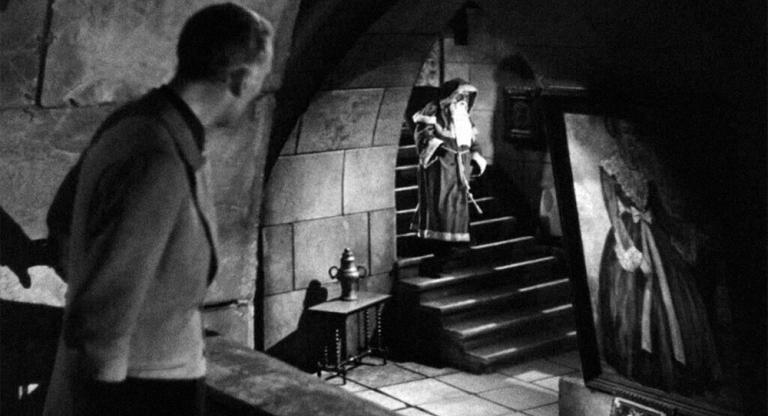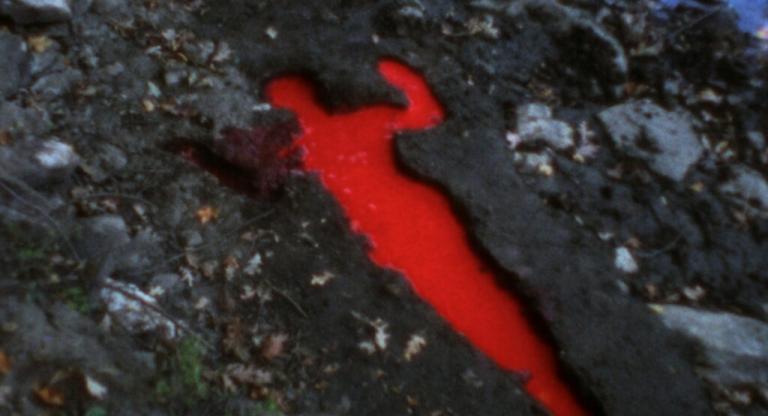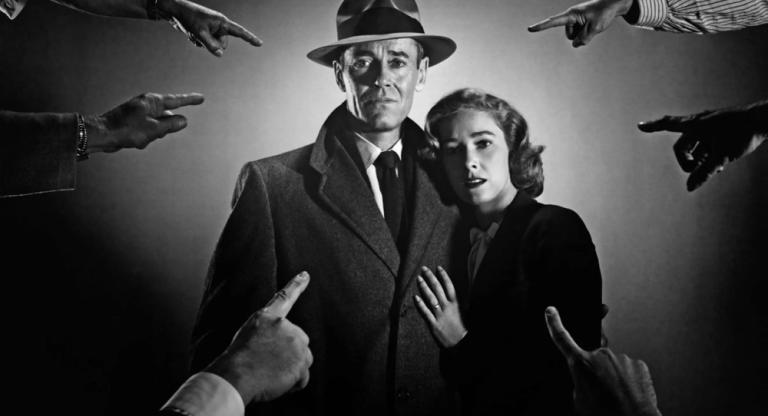Ryusuke Hamaguchi needs little introduction these days with two award-winning and widely acclaimed new films out this year: Wheel of Fortune and Fantasy and Drive My Car. The former opened in US cinemas last month, and the latter runs at Film Forum and Film at Lincoln Center this week and next, and is the Oscar submission from Japan this year. Just this week, Drive My Car won the Gotham Independent Film Award for Best International Feature.
When Screen Slate approached me about interviewing Hamaguchi, I had just coincidentally accepted the offer to be his interpreter during his visit to New York, where both Wheel of Fortune and Fantasy and Drive My Car showed at NYFF. I met Hamaguchi for the first time when Happy Hour (2015) played as part of New Directors/New Films five years ago, and I was his interpreter for the Q&A then as well. In just five years, Hamaguchi has become a beloved name in the arthouse scene the world over. The sheer number of interviews he did during his short stay in the city is proof of what a hot item he has become.
No matter how many interviews he did, and despite many of the same questions inevitably being pitched at him, Hamaguchi always managed to find new and creative ways to answer them—thoughtfully, sincerely, and with charm. Since I know first-hand that there are many wonderful interviews out there of Hamaguchi discussing his two new films, I spent some time over coffee and lox bagels one morning to chat with him about broader ideas concerning his approach to life, collaboration, and movies.
Aiko Masubuchi: A film is a kind of total art that involves many disciplines, right?
Ryusuke Hamaguchi: That’s a huge topic.
AM: Well, being on a press tour with you, I know that you’ve been asked a lot about performance and casting in relation to your recent films so I thought I’d start by asking you about how you “cast” your crew members on set.
RH: It’s very different between commercial filmmaking and independent filmmaking [Ed. note: Drive My Car was produced on a bigger budget with higher commercial stakes, whereas Wheel of Fortune and Fantasy was made on a smaller budget with independent financing]. With commercial films, gathering the crew is generally within the purview of the producer. The considerations behind the decisions there tend to be something like,“It might be interesting to match this director with this crew member.” However, I’ve shot two commercial films so far and in both instances, I’ve asked to choose the cinematographer myself. Asako I & II [2018] was shot by Yasuyuki Sasaki, who I’ve collaborated with since my days as a student at Tokyo University of the Arts. For Drive My Car, I worked with Hidetoshi Shinomiya, who I’ve known for over a decade, but it was when I saw Shô Miyake’s And Your Bird Can Sing [2018], which Shinomiya shot, that I thought, “Wow, he’s great,” and I asked him to be the cinematographer.
As for the rest of the crew, I left it up to the producer but when I did so, I asked that they choose people who are easy to communicate with. As a result, the people who ended up joining were not many veterans in the field [who have had longer careers than me] but more people of my generation.
When I’m shooting an independent film I have the same concerns, but we’re working with a very small crew, and as a result the distance between the actors and the crew becomes that much closer. So, it’s important to me that the crew are people who do not put pressure on the actors. Yoshio Kitagawa, who shot Happy Hour, and Yukiko Iioka, who shot Wheel of Fortune and Fantasy, are exactly those kinds of people. They’re both very different from each other but Kitagawa is a cinematographer who always ends up liking the actors he works with, and Iioka is someone who is accepting of everything that happens. Having people like that on set allows the actors to truly relax. The assistant directors on the set of Wheel were three young people in their thirties and they said to me that “There are no film sets that are as peaceful as this one.” People said things like, “Nobody’s shouting at people,” and “Anyone I talked to on set turned out to be really nice people.” They said that it’s rare to find a set that’s as relaxed as ours. People said that to me during the shooting of all three stories [of Wheel of Fortune and Fantasy]. In this sense, what’s most important is the kind of people that we bring together.
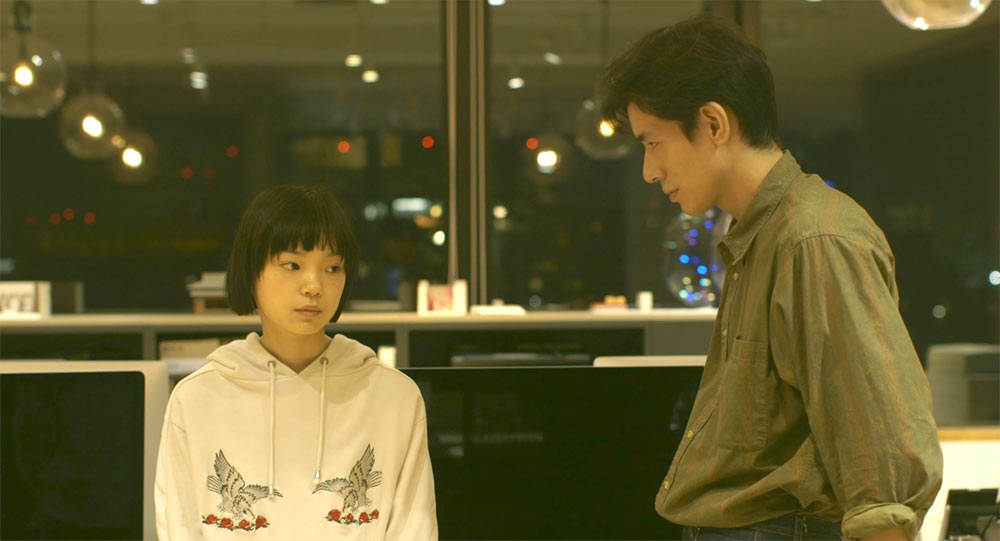
AM: Are you talking specifically about your independent films? How about on the set of Drive My Car, which was a commercial film?
RH: Actually, people said that to me on the set of Drive My Car as well. They said that compared to other commercial film sets, our set was an environment in which it was very easy for the actors to do their work.
AM: I’m assuming that a peaceful and pleasant set can only happen by having people there who are peaceful and pleasant. What do you do when you get irritated because things aren’t going well? Do you even get irritated? How do you communicate your frustrations?
RH: First and foremost, I try to release things that could frustrate me while they’re not a big deal. It’s not good to let them compound too much. Fundamentally speaking, the good thing about independent filmmaking is, well—how do I put it—we’re of course paying everybody, but we’re not able to pay everyone huge amounts. So, my stance on set is, “I’m really sorry, but would you mind doing this?”
Also, the thing that I’ve particularly emphasized since around the time I made Happy Hour is to say that the risks that actors and those who stand in front of the camera carry are far greater than the ones carried by those behind the camera. Even if they are performing and acting out a fiction, what you see on the screen is still connected to their being as a human and that connection will always be apparent, for better and for worse, in the future. Those connections get recorded and will stick around forever. This means that the risks that the actors carry are incomparable to the rest of us. I don’t necessarily go into this much detail when I talk about this with my crew, but I do talk about the risk that people in front of the camera are taking. That’s why, for us crew, our number one job is to try to eliminate as many elements that can become a burden to the actors in front of the camera. When you can all be on the same page about that, it’s easier for a more pleasant atmosphere to be born. I think it’s about respect. As long as there’s respect towards the things that we are doing, I don’t think sets become a rough place. The actors can also relax if they feel respected and the atmosphere won’t become tense even if we’re shooting what might be considered “a difficult scene.”
AM: Whenever I hear you talk about how you shoot, you place a lot of importance on the amount of time you take to shoot and rehearse. Was there an instance that made you decide to work in this way?
RH: In a sense, it was a gradual process. I shot a film called Intimacies [2012] as part of an acting course at a film school in Japan called ENBU Seminar. The acting course was a year long and they had a new instructor every three months. I was the instructor for the last three months and the task was to shoot a thesis film with the students as actors. That resulted in Intimacies.
The students were all budding actors who didn’t even know yet if acting is what they wanted to do with their lives. Yet, in the three months I spent with them, there were moments when they surprised me by the things they brought to their work. None of them were star actors, and most of them didn’t even know if they would eventually be signed to an agency, but as I spent more time with them, had conversations with them, learned about their personalities and the issues that they were each facing, I began to think about how best I could cheer them on. It was then that directing and this sense of “cheering them on” came together inside me. I had already made films like Passion [2008] and Depths [2010] at that point, but when I made Intimacies I had the sense that I was experiencing things that I had never seen before. It made me realize that there are things that occur only with time.
This approach felt inevitably closer to the process of documentary filmmaking. And it was around then that the Great East Japan Earthquake happened and I ended up making documentaries that took about two years to make. They were films that revolved mainly around interviews and of people talking.
While we were interviewing, at the beginning, there were some things that worked and [others that] didn’t work. When my co-director of the project, Kō Sakai, and I were talking about the difference in circumstances between when things worked and when they didn’t, we arrived at the idea that the more times we met with the subject or the more we were able to talk to the subjects in advance of the shoot, the better the results. And so, we decided to meet with everyone three or four times without the camera before we recorded them. We took this approach with about thirty people, and it was hard work in a way, but just by doing this, the subjects relaxed with us. They understood that we were interested in hearing about everything and anything. They understood that we weren’t just interested in hearing about their experiences as victims of the earthquake but also about who they are as people and the relationships they have. There are things that don’t get revealed very easily unless they understand that we’re interested in all of this. That’s something I learned by making documentaries. And the film that I decided to make next with the very deliberate intention of spending a lot of time was Happy Hour.
AM: So, in some ways, Happy Hour is a result of combining what you learned through documentaries and through doing workshops?
RH: That’s right. But I didn’t know what that would actually result in. All I knew upfront was that I will hold a workshop once a week over the course of six months and that the theme of the workshop will be “listening.”
We had said, “Let’s do this workshop for six months and when we’re done, let’s shoot a film over the course of a month.” But again, this six-month-long workshop ended up being a very enriching time for me. When you do a workshop around listening, everybody, as expected, really listens to each other. As a result, a very dense web of relations was born between the participants. So, ultimately, unless everybody there felt respected, somebody ended up feeling hurt. This resulted in Happy Hour, which featured all seventeen participants from the workshop. We, of course, needed to shoot in a way that everybody felt respected, and that resulted in an eight-month shoot and a five-hour-long film.
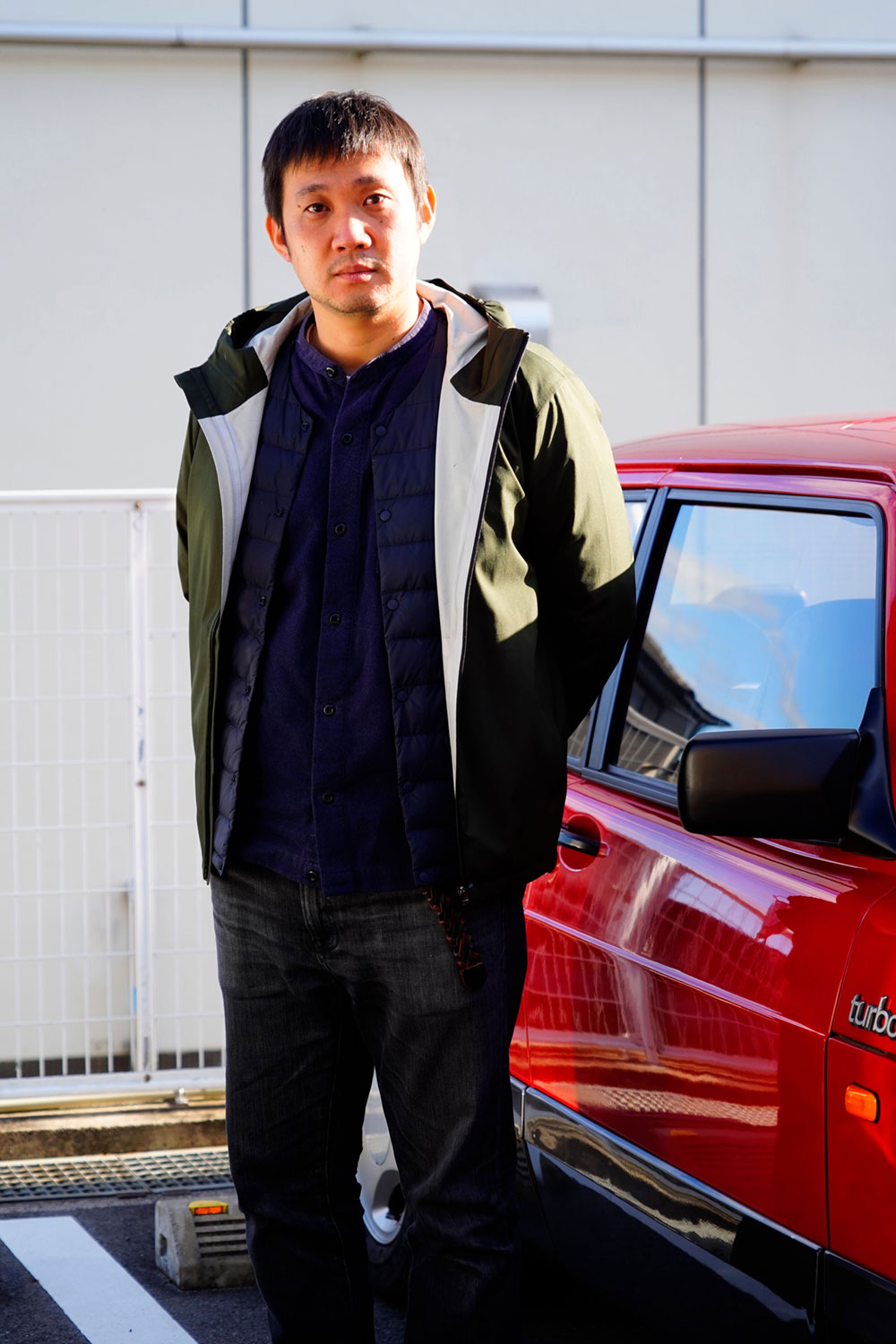
AM: You made the theme of the workshop be about “listening,” and you said you conducted a lot of interviews when you made the documentaries. I’ve also heard you talk about interviewing theater people in preparation for Drive My Car. Is the act of interviewing important to your filmmaking process?
RH: I believe so. For example, I think interviewing dramaturges for Drive My Car because of the theater elements in the story is, to a certain extent, within the realm of any normal creative process. But I actually have a desire to ask much much more than I actually do. In fact, I have a strong desire to start working from a place of listening to people. Things that I hear from other people leave very deep impressions on me. And those things can sometimes crop up while I’m writing my scripts. So listening is something I love to do, and it’s an important part of my process, but on the other hand, the act of listening should not become an act of taking or stealing. That balance is actually very difficult to achieve.
The Japanese word for “interview” (shuzai, 取材) is made up of two characters that mean “to gather or take” and “materials or ingredients,” but I think that when interviewing becomes merely the gathering of materials for myself, the person who was interviewed can feel hurt by the process. I’ve recently been feeling the heft of finding the appropriate balance. I want to ask many things, but I have to make sure that the person who was asked does not feel like I took something away from them. To be honest with you, I don’t think I’ve found the answer to the correct balance. But I do know that listening is an incredibly important thing to do, and it occupies a crucial part of my own life. In fact, you could read a book to experience a life other than your own, but that act of reading is, I believe, a type of listening. After all, we can’t know about the lives of others if we don’t listen. That’s why I really like to listen and why it’s truly fun for me.
These days, I’m often asked to distinguish between original stories and adaptations, but I’ve started to think that there is no such thing as an original. Everything is an adaptation. What I mean is that even my works that are called “original works” are, at a fundamental level, extracted from my own lived experiences, and what I’m doing is adapting them. Even the first story of Wheel of Fortune and Fantasy is based off of a conversation I overheard from a table next to me. However, I’m only using parts of what I heard, and I’ve changed quite a lot of the story, so I don’t think it would be possible for the people to think that the story is based on their conversation. I should never forget that whatever I do is fundamentally an adaptation of something that is rooted in reality. If I am not conscious of the fact that I am borrowing something and that I owe something to others, I believe that I will ultimately experience the repercussions of my actions.
That’s something I have to be careful about when I’m making something that is “original.” No original work just originates out of nowhere. They all necessarily come from somewhere or someone and if I don’t pay my due respects toward those things, someone will feel like something was taken away from them, and that will evidently come back to bite me one day.
AM: So you’re saying that whether you’re making an adaptation of a literary work like Drive My Car or whether you’re making Wheel of Fortune and Fantasy [an “original”], you’re still borrowing from somewhere regardless. You’re adapting things in both instances. So are you saying that you adapted your own experience of reading [Haruki Murakami’s short story] “Drive My Car?”
RH: Exactly, exactly. It’s not that I’m borrowing the text itself or even the content of the story, but I’m adapting my own experience of reading the work and attempting to share that with the audience. It’s like I’m using myself as a conversion device. The only output technique that I’m equipped with is filmmaking, so I’ve ended up outputting the things I’ve inputted in the form of films. I feel that whatever it is that has stayed in me very strongly has ended up being outputted.
AM: As an interpreter, I really feel what you’re saying because when I’m interpreting, I’m not thinking about the words themselves that I just heard. I’m not just converting the words in my head and outputting those. For example, when I’m interpreting for you, what I’m doing is to first and foremost listen to what you’re saying and try to understand what you just said, and then to output that. Outputting is never a one-to-one conversion of one word in one language to another. At least to me, it’s really more about thinking, feeling, and trying to communicate what I’ve understood about what you just said. It just so happens that I’m communicating that understanding through a different language from the one I just heard. This feels really similar to what you just talked about. Even the part about using yourself as a conversion device.
RH: I think that’s really true. There’s a collection of essays, or rather, a transcript of talks between Haruki Murakami and the translator Motoyuki Shibata called Honyaku Yawa, or Informal Conversations on Translation. In it, translation is treated exactly as that. They talk about how translation is the act of using one’s body to listen to the other person’s voice, or “listen to the original text.” They say it’s about listening to the “voice” of the original and then to use your own “voice” to express it. I remember thinking that this notion of translation is incredibly similar to acting.
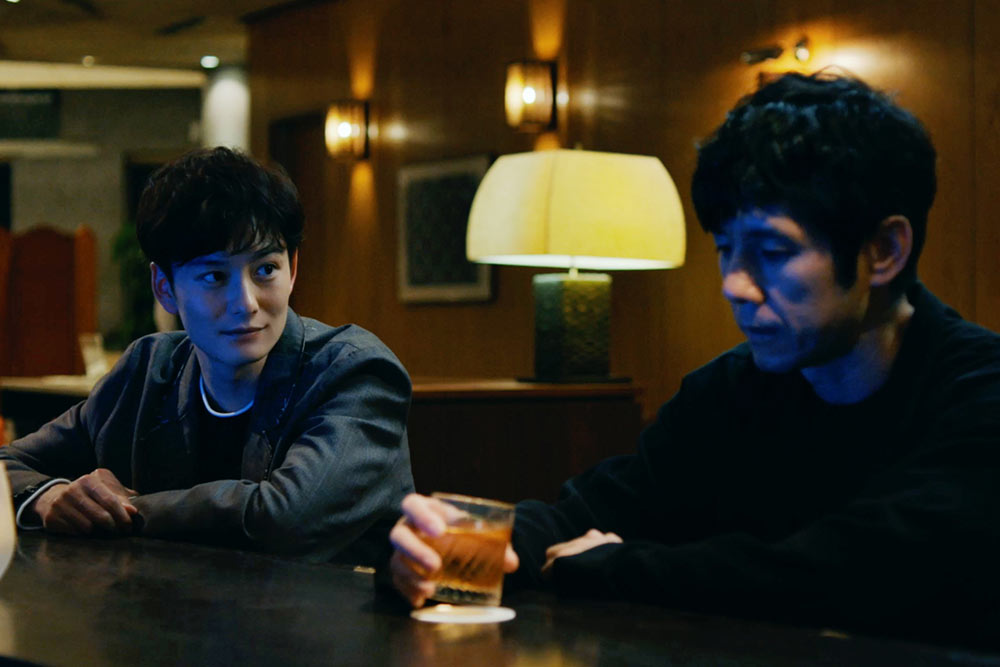
AM: You just talked about “voice.” In a different interview, I remember you saying that when you direct, you’re waiting for the moment when you hear a change in the quality of the voices of the actors. When did you start thinking about that?
RH: I think the first time I thought about voices in this way was when I was making the documentaries. The documentaries I made consisted of just people talking. Deciding whether to use that footage or not is of course partly about what they’re saying but to base all the decisions on that factor isn’t quite right.... So then, what Sakai [the co-director] and I ended up saying to each other was, “They had a great voice in that moment” or “Remember that moment when they were clearly trying to say something very truthful?” We said things like “Didn’t their voice sound like they were trying to say something incredibly important to them?” In fact, we were having these kinds of conversations in a car on our way back from our interviews.
When voices like that are born, something about the space feels changed. It might simply be a result of a change in my own body but I think that in itself results from hearing the other person’s voice and imagining what that other person’s body is feeling. There is a kind of voice that can make you feel that something is about to be born. The moments that Sakai and I felt this often turned out to be the same. They were shared experiences, and it made me think that these moments are quite evident. It made me realize that it’s not all about what is being said but that there is clearly something in the quality of the voice. So we decided to edit with this at the core of our decision-making. In other words, our decisions came down to whether this thing with the voices was happening or not. It really trained our ears to that. It simply led me to realize that there is so much information in a voice. I realized that “Oh, wow, voices can change so much depending on that person’s psychological state or their relationships to their surroundings.” And I brought that newfound realization to the making of Happy Hour.
When I’m doing table readings, I really ask my actors to repeat the lines over and over without emotion. Of course, it’s not that the text can be about anything, but sometimes, when I’m listening to the voices during the readings, I can find myself moved by the voices alone. It makes me think, “I’d be happy if the film is just about this moment.”
Through repetition, the script starts to blend in with the body. That happens in a state of relaxation and openness, but moreover, I think, it means that the text has been accepted by the actors at a psychological level. What I mean by that is that it’s not even that the mouth gets used to saying the words but that at the very least, they’ve reached a state in which there’s no resistance at a psychological level to say the text. They’re no longer acting from the necessity to say the text. When the actor is in this state, I think that the text has reached somewhere very deep in them and has become one with their body. I think what moves us is when this state is expressed through the voice. And I’ve felt that we’re able to capture something good when we can head into the set in this state of being.
AM: As you know, this interview is for Screen Slate, a website that is chock-full of information about various movie theaters in New York. You yourself have been one of the primary organizers behind initiatives like Mini-Theater Aid in Japan, and you’ve done a lot for the culture of moviegoing. What are your feelings and thoughts toward the movie theater? Do you have a favorite theater?
RH: Every movie theater is important, I think. Of course, arthouse movie theaters or “mini-theaters” as we call them in Japan, have curatorial thoughts, and they’re wonderful. But, as a more general statement, I think all movie theaters are incredibly important spaces.
Let me connect this to what we’ve talked about so far by saying that the movie theater provides the best lesson in watching and listening. After wrapping a shoot, I go into the editing booth and I always end up thinking about how I’ve failed to see or hear things on set. No matter how concentrated I was on set, I end up saying to myself, “Wait, that’s what I was doing?” or “That’s how I was doing it?” That’s how inferior our ability to listen or see is compared to the recording abilities of machines like cameras or mics.
That’s why one approach I try to insist on for myself while shooting is to try to see as close to a camera and try to hear as close as a mic. Of course, that’s impossible. It’s impossible, but I try to be as aware as I can of the things that are happening on set. I try to widen the range of information that I’m capturing as much as possible. Of course, depending on my interest in that moment, I end up concentrating on certain parts more than others and therefore gain more information on those parts. However, it’s not possible to make a film unless I tell myself to see and hear as wide a range of things as possible. Otherwise, when I’m in the editing room, I’m going to struggle to a frightening extent.
That’s how much information a film innately carries. So to experience films in a place like a house using a smartphone where there are many distractions—there’s no way to achieve the kind of awareness “like a camera” or “like a mic.” If there is one place that this could be done, I think it’s the movie theater. For example, it is at a movie theater where you can continue to have the amount of concentration that can allow you to notice even the slightest movements in a landscape or a person’s body and be able to realize that something is happening.
At this point in time, no other place than a movie theater can prepare us for this level of concentration. It makes me think that without the experience of seeing a film in a movie theater there is no way for the moving image medium to unleash its fullest potential. The realizations that I have at a cinema can become the core idea for the next thing that I make. Even if you’re not a filmmaker, I think that there can be times when the world outside can look completely different when you step out of a movie theater, where your eyes and ears have been re-trained. It’s difficult for me to think that there is any other place that exists right now that can have this kind of an effect. A movie theater is not just a place that provides high-quality experiences, but they are places that have the power to change a person’s life completely.
Ryusuke Hamaguchi’s Drive My Car (2021) screens at Film Forum and at Film at Lincoln Center this week and next. Wheel of Fortune and Fantasy is showing at various brick-and-mortar and virtual cinemas via Film Movement.
